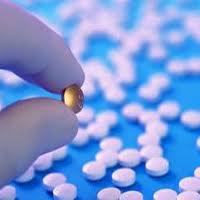Cellulose Acetate Phthalate
1800.0 INR/Kilograms
Product Details:
- Moisture (%) not available
- Molecular Weight 678.58992 Grams (g)
- Structural Formula C28H38O19
- Ph Level not available
- HS Code 39121190
- Storage Room Temperature
- Grade medicine grade
- Click to View more
X
Cellulose Acetate Phthalate Price And Quantity
- 1800.0 INR/Kilograms
- 25 Kilograms
Cellulose Acetate Phthalate Product Specifications
- 9 Days
- Cellulose acetate phthalate is commonly applied to solid-dosage forms either by coating from organic or aqueous solvent systems, or by direct compression.
- C28H38O19
- not available
- not available
- insoluble in water
- No Smell
- White or off-white powder
- < 10
- 99%
- 5.0 %
- 39121190
- not available
- C28H38O19
- not available
- 678.58992 Grams (g)
- Room Temperature
- It is used as an enteric film-coating material, as a microencapsulation agent, or as a matrix binder for tablets and capsules
- 9004-38-0
- Odorless
- medicine grade
- cellulose acetate hydrogen
Cellulose Acetate Phthalate Trade Information
- mumbai
- Cash Against Delivery (CAD), Cash Advance (CA), Cash in Advance (CID), Days after Acceptance (DA), Delivery Point (DP), Letter of Credit at Sight (Sight L/C), Letter of Credit (L/C)
- 100 Kilograms Per Day
- 7 Days
- No
- Free samples are available
- DRUM and bag packing
- Asia, Australia, Central America, North America, South America, Eastern Europe, Western Europe, Middle East, Africa
- WE PROVIDES ALL KIND OF CERTIFICATIONS AS YOU REQUIRED
Product Description
Cellulose acetate phthalate is a high-quality product that we offer. As a manufacturer, exporter, distributor, trader, and supplier of Cellulose Acrylate Phthalate, we serve clients all over India as well as African Countries, CIS Countries, LATAM countries, Gulf Countries, South East Asia countries, Central American Countries and European countries. Our professionals ensure the purity and effectiveness of this product by packing it according to diverse packaging options.
Cellulose Acetate Phthalate Properties:
- Synonyms: Aquateric
- CAS NO.: 9004-38-0
- EINECS: 618-382-8
- Molecular Weight: 678.58992
- Molecular Formula: C28H38O19
- Appearance: White or off-white powder
Introduction of product:
Also known as known as cellacefate (INN) and cellulosi acetas phthalas, cellulose acetate phthalate (CAP), is a polymer phthalate commonly used in pharmaceutical formulations, such as enteric coating for tablets and capsules and in controlled release formulations. It can be dissolved in buffer solutions with pH values as low as 6. Consequently, it has found use in enteric coatings. Adding plasticizers makes the ester more water-resistant.
How does it work:
Cellulose acetate phthalate can be used in many ways, for instance as a microencapsulation agent, as an enteric film-coating material, or as a matrix binder for tablets and capsules. They won't dissolve under mildly acidic conditions in the intestine, but will dissolve in strongly acidic gastric fluid. Acetic acid, acetone, and pyridine are some of the organic solvents commonly used in the phthaloylation of cellulose acetate. Anhydrous sodium acetate is one of the basic catalysts used when using acetic acid, amines is another when using acetone, and the organic solvent as well when using pyridine as reaction medium.
Applications Or where it is used:
The cellulose acetate phthalate (CAP) material is used for enteric coatings or as a matrix binder for tablets and capsules. Surface coatings such as these resist contact with highly acidic gastric fluids, but dissolve in mildly acidic or neutral intestinal environments.
Cellulose acetate phthalate is applied to solid-dosage forms by two, one by by coating from organic or aqueous solvent systems, and other by direct compression. Concentrations generally range from 0.5 to 9.0% of the core weight. Plasticizers improve the water resistance of this coating material. Formulations using plasticizers outperform its formulations alone.
It is compatible with many plasticizers, such as:
- Acetylated monoglyceride
- Butyl phthalybutyl glycolate
- Dibutyl tartrate
- Diethyl phthalate
- Dimethyl phthalate
- Ethyl phthalylethyl glycolate
- Glycerin; propylene glycol
- Triacetin
- Triacetin citrate
- Tripropionin
The compound can also be used as part of another coating agent, such as cellulose, in preparations for controlled-release drugs.
In terms of therapeutic application, cellulose acetate phthalate recently demonstrated experimental microbicidal activity against sexually transmitted disease pathogens, such as the HIV-1 retrovirus.
Manufacturing process:
Wood pulp is converted into cellulose acetate by reaction with acetic acid and acetic anhydride in the presence of sulfuric acid. Hydrolysis of the triacetate is then carried out to achieve the desired substitution level.
Tell us about your requirement

Price:
Quantity
Select Unit
- 50
- 100
- 200
- 250
- 500
- 1000+
Additional detail
Mobile number
Email









 : nilesh.sheth70
: nilesh.sheth70
